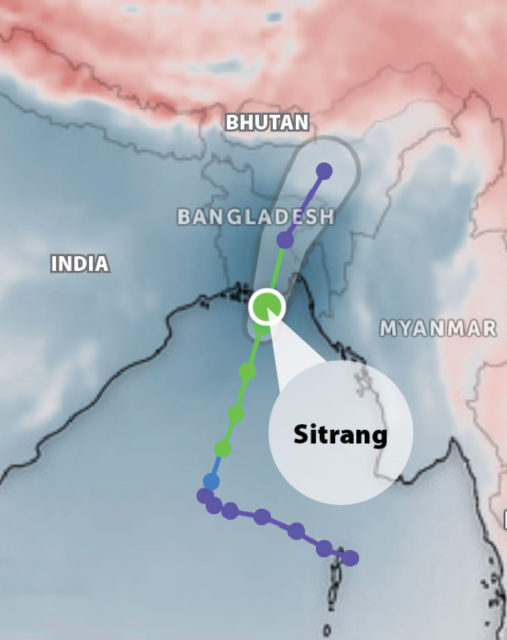Choki Wangmo
Bhutanese farmers, especially those about to harvest their paddy, need not worry about cyclonic storm “Sitrang” (Si-Trang) as of yesterday.
According to the National Centre for Hydrology and Meteorology (NCHM), a low-pressure system developed in the Southeastern Bay of Bengal on October 21. Yesterday, the system intensified and is likely to continue to move north-northeastwards and intensify further into a severe cyclonic storm.
However, the chief of Weather and Climate Services division with NCHM Singay Dorji (PhD) said that the cyclonic impact on Bhutan would be minimal. Only moderate to heavy rain is likely in the southeastern, eastern, and central parts of the country is expected from October 24 to 25, the weather advisory from the centre stated.

“Learning from last year’s experience, we have informed people through various media since October 22. It could help farmers prepare and plan their harvest according to the weather,” he said.
Around this time last year, incessant rain ruined harvest paddy in the western, eastern and central dzongkhags.
Cyclone Sitrang, meaning ‘leaf’ in Thailand, formed in the evening of October 23 and intensified into a severe cyclone by last night, six hours before de-intensifying into a cyclone. It is the first tropical cyclone of the post-monsoon season this year formed at the Bay of Bengal since October 2018.
“Its current track is towards the Bangladesh coast, where it may make landfall between Tinkona and Sandwip islands in the early morning hours today,” India Meteorological Department reported.
As of late afternoon yesterday, the cyclonic storm was about 300 km from Sagar Island in the Bay of Bengal. And by noon yesterday, it was traveling at a speed of 75km/hr.
As a result, from October 24 till October 27, all districts in the country will have cloudy weather with light to moderate rain, stated the weather advisory.
The months of October-November and May-June see storms of severe intensity develop in the North Indian Ocean — comprising the Bay of Bengal and the Arabian Sea — with an average of five developing in a calendar year.


